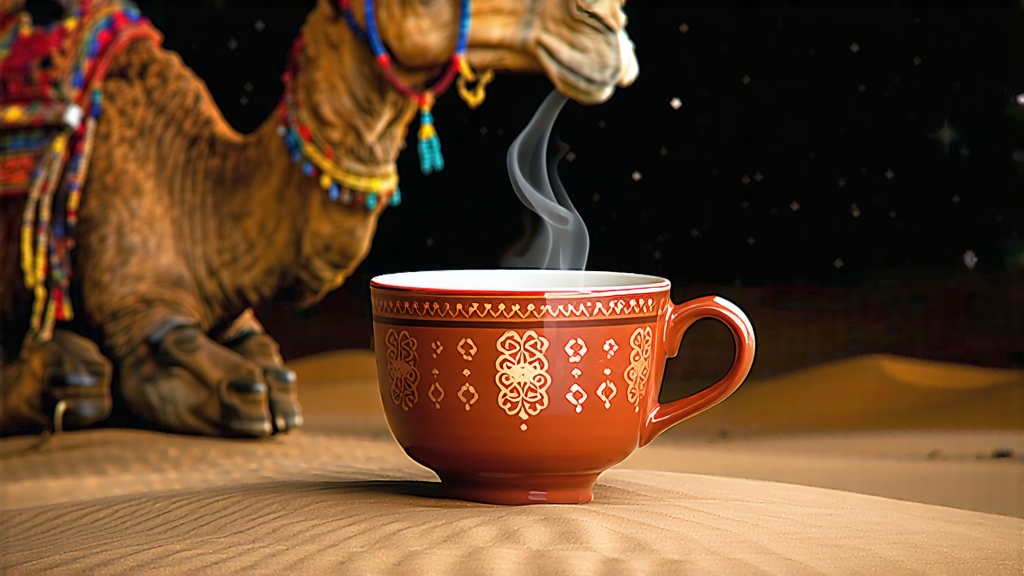
Few beverages carry the quiet gravitas of Fu brick tea, a dark, tightly compressed rectangle that once served as currency along the Silk Road. Today it is celebrated less for its buying power than for the mellow, malt-sweet liquor that seems to dissolve centuries in a single sip. To understand Fu brick is to follow the aroma of damp earth and dried jujube back through Ming-dynasty garrisons, Qing-era horse markets, and the frost-rimmed warehouses of modern Shaanxi.
1. Historical footprints
The earliest written record appears in the Jiajing era (1522–1566) of the Ming dynasty, when frontier troops in today’s Shaanxi province bartered steamed tea leaves for Mongolian warhorses. The bricks were easy to stack on camelback, resisted mold during the six-month trek to Kashgar, and—crucially—improved in flavor when exposed to the dry cold of the Gobi. By the 19th century the city of Jingyang had become the epicenter of production; caravans left its gates bearing stamped bricks marked with the Chinese character “Fu” (福), a homophone for “blessing” and a guarantee of authenticity.
2. Terroir and leaf choice
Authentic Fu brick is still made only in the Guanzhong plain, a loess plateau where the Wei River moderates humidity and winter temperatures hover just above freezing. Only the third and fourth leaves of Camellia sinensis var. sinensis—those tough, leathery blades rich in soluble cellulose—are selected. Young buds, prized in green tea, are deliberately avoided; their high amino acid content would encourage sourness during the month-long fermentation.
3. Crafting the brick: a dance of steam, pressure and microbes
The journey from leaf to brick unfolds in six meticulous stages:
a. Pan-firing (杀青)
Leaves are tossed in 280 °C woks for three minutes to rupture cell walls and neutralize oxidative enzymes.
b. Rolling (揉捻)
While still warm, the leaves are rolled into tight strips; this fractures surface hairs and exposes polyphenols to future microbial attack.
c. Piling (渥堆)
The strips are heaped 70 cm high, sprayed with Wei-River water, and covered with hemp cloth. Interior temperature climbs to 55 °C within 24 hours, triggering a succession of bacteria dominated by Bacillus subtilis. Over 12 days the pile is turned four times; chlorophyll breaks down, catechins dimerize, and a faint hay-like aroma emerges.
d. Adding “Fu” flowers (发花)
The half-fermented loose tea is steamed again, then inoculated with spores of Eurotium cristatum, a golden-yellow mold safe for human consumption. The inoculated tea is packed into 2 kg cedarwood molds and wheeled into an underground “flower room” kept at 28 °C and 75 % RH. Over the next 15 days the mold blooms into visible yellow speckles—nicknamed “golden flowers” (金花). These flowers secrete enzymes that convert residual starch into soluble sugars, giving Fu brick its characteristic candied-sweet finish.
e. Compression (压制)
A 20-ton hydraulic press squeezes the inoculated tea into a dense brick; pressure is held for six seconds—long enough to bind the leaves but short enough to leave air channels for continued micro-aerobic aging.
f. Drying and resting (干燥陈化)
Bricks are stacked in ventilated corridors for 40 days. Moisture drops from 18 % to 9 %, and the golden flowers slowly retreat into dormancy, ready to reactivate whenever the brick meets higher humidity again—an assurance of dynamic, living tea.
4. Variations within the Fu family
Although all Fu bricks share the same core process, regional tweaks create subtle styles:
- Jingyang Fu: Classic mold, mellow and slightly cocoa-like.
- Anhua Fu (Hunan): Higher elevation leaves lend notes of pine bark and camphor.
- Border-region Fu: Compressed into slimmer “horse-hoof” bricks, these were historically traded for Tibetan yak butter and retain a smoky edge from open-air drying.
5. Aging potential
Unlike green tea that fades, Fu brick enters a plateau of peak flavor between five and twelve years of age. During this window, Eurotium cristatum continues